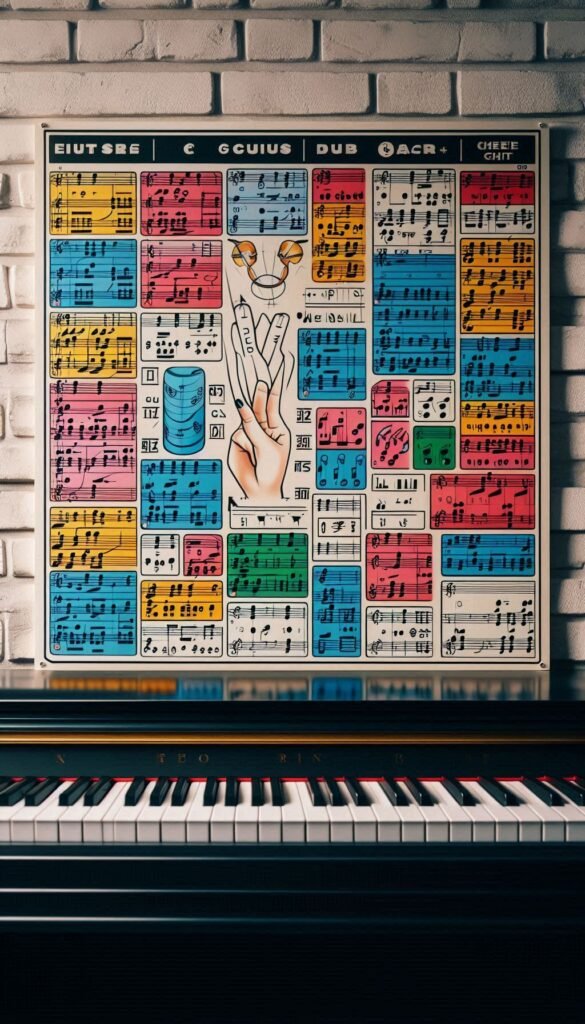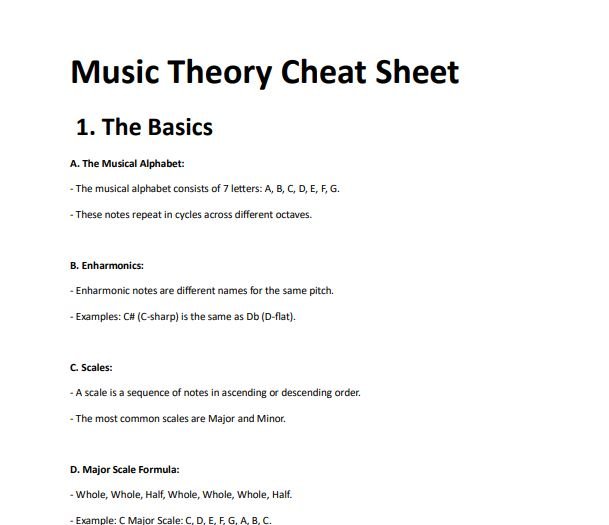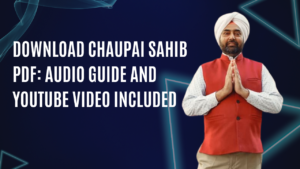Are you struggling to grasp the fundamentals of music theory? Don’t worry; we’ve got you covered!
We’ve included a thorough music theory cheat sheet in PDF format in this post, which is ideal for easy study and rapid reference. You can study music theory more quickly and easily by using our printable cheat sheet PDF, which will also make it simpler for you to comprehend and apply the material.
What is Music Theory?
The study of the possibilities and practices of music is known as music theory. It includes the analysis of melody, harmony, rhythm, and structure in music. Having a firm understanding of music theory can improve your compositional, improvisational, and in-depth understanding of music. To reach your greatest potential as a musician, regardless of experience level, you have to understand music theory.
Overview of the Music Theory Cheat Sheet PDF
We cover a wide range of topics that are necessary for any musician in our cheat sheet. Included are the following primary sections:
- Scales: Major, minor, and other scales.
- Chords: Major, minor, diminished, augmented, and more.
- Intervals: Understanding the distance between notes.
- Key Signatures: Both major and minor key signatures.
- Modes: Different modes and their applications.
- Cadences: Types of cadences and their uses.
- Rhythmic Values: Note and rest durations.
- Time Signatures: Simple, compound, and complex time signatures.
- Dynamics: Indicators of volume in music.
- Articulations: Symbols indicating how notes should be played.
- Ornamentations: Trills, mordents, and other decorative notes.
This cheat sheet is made to be quickly consulted, so you can locate the information you require more easily when you need it. It’s a useful tool that will keep you concentrated and productive throughout practice and composition.
A preview of the information included in the cheat sheet is shown below:

Download the PDF
Are you prepared to make learning music theory easier? Get our thorough music theory reference guide in PDF format right now!
[Download Music Theory Cheat Sheet PDF]
To use it as a quick reference during your practice sessions, click the above link, store the file to your device, and begin utilizing it. This cheat sheet can be very helpful if you have a hard copy or digital version. It will let you check up information fast without interfering with your work.
How to Use the Cheat Sheet
Practical Tips:
- During Practice:
- Keep the cheat sheet nearby to quickly reference scales, chords, and intervals.
- Use it to check your understanding and ensure you’re playing correctly.
- Composing Music:
- When writing new compositions, make sure your harmonies and progressions are correct by using the cheat sheet.
- To assist you choose the appropriate key for your composition, refer to the key signature section.
- Improvisation:
- Make use of the parts on modes and scales to enhance your improvisational abilities.
- Play around with various chord progressions, referring to the cheat sheet for guidance.
Integration:
- To help you remember what you’ve learned, include the cheat sheet into your daily practice regimen.
- To be ready for music theory tests or lessons, use it as a study tool.
- To aid students or other musicians in their educational endeavors, share it with them.
Simplify Your Learning with Our Music Theory Cheat Sheet PDF
Are you struggling to grasp the fundamentals of music theory? Don’t worry; we’ve got you covered!
In this post, we’ll provide you with a comprehensive music theory cheat sheet in PDF format, perfect for quick reference and easy learning. Our downloadable music theory cheat sheet PDF will help simplify your learning process, making it easier for you to understand and apply key concepts.
What is Music Theory?
Music theory is the study of the practices and possibilities of music. It encompasses the study of musical structure, rhythm, harmony, and melody. A solid grasp of music theory can enhance your ability to compose, improvise, and understand music at a deeper level. Whether you’re a beginner or an experienced musician, understanding music theory is crucial for unlocking your full potential.
Overview of the Cheat Sheet
Our cheat sheet covers a wide range of topics essential for any musician. Here are the main sections included:
- Scales: Major, minor, and other scales.
- Chords: Major, minor, diminished, augmented, and more.
- Intervals: Understanding the distance between notes.
- Key Signatures: Both major and minor key signatures.
- Modes: Different modes and their applications.
- Cadences: Types of cadences and their uses.
- Rhythmic Values: Note and rest durations.
- Time Signatures: Simple, compound, and complex time signatures.
- Dynamics: Indicators of volume in music.
- Articulations: Symbols indicating how notes should be played.
- Ornamentations: Trills, mordents, and other decorative notes.
This cheat sheet is designed for quick reference, making it easier for you to find the information you need when you need it. It’s a handy tool for both practice and composition, helping you to stay focused and efficient.
Here’s a sneak peek at the content you’ll find in the cheat sheet:

Download the Music Theory Cheat Sheet PDF
Ready to simplify your music theory learning? Download our comprehensive music theory cheat sheet PDF now!
[Download Music Theory Cheat Sheet PDF]
Click the link above, save the file to your device, and start using it for quick reference during your practice sessions. Having a physical or digital copy of this cheat sheet can be incredibly useful, allowing you to quickly look up information without breaking your flow.
How to Use the Cheat Sheet
Practical Tips:
- During Practice:
- Keep the cheat sheet nearby to quickly reference scales, chords, and intervals.
- Use it to check your understanding and ensure you’re playing correctly.
- Composing Music:
- Refer to the cheat sheet when creating new pieces to ensure your harmonies and progressions are accurate.
- Use the key signature section to help determine the best key for your composition.
- Improvisation:
- Utilize the modes and scales sections to expand your improvisational skills.
- Experiment with different chord progressions using the cheat sheet as a guide.
Integration:
- Incorporate the cheat sheet into your daily practice routine to reinforce learning.
- Use it as a study aid to prepare for music theory exams or classes.
- Share it with fellow musicians or students to help them in their learning journey.
Additional Resources
These resources are suggested for anyone wishing to learn more about music theory:
- Books:
- “Music Theory for Dummies” by Michael Pilhofer and Holly Day.
- “The Complete Idiot’s Guide to Music Theory” by Michael Miller.
- Websites:
- Online Courses:
- Coursera’s “Fundamentals of Music Theory” by The University of Edinburgh.
- Udemy’s “Music Theory Comprehensive” series by Jason Allen.
It can also be quite helpful to join an online forum or discussion group for music theory. It offers a forum for exchanging ideas, asking questions, and learning from the experiences of others. Joining our discussion group on music theory can help you learn more and meet people who share your interests.
Conclusion
For every musician, our music theory cheat sheet PDF is an invaluable resource that offers a fast reference for key ideas. Whether you’re using this cheat sheet for improvisation, composition, or practice, it will help you learn music theory more quickly and effectively.
Take the next step in your musical journey by downloading your PDF music theory cheat sheet now! Don’t miss out!
Do you have any comments or inquiries? Tell us how the cheat sheet is working for you in the comments section below! We would be interested in knowing about your experiences as well as any other advice you may have on making good use of the cheat sheet.


